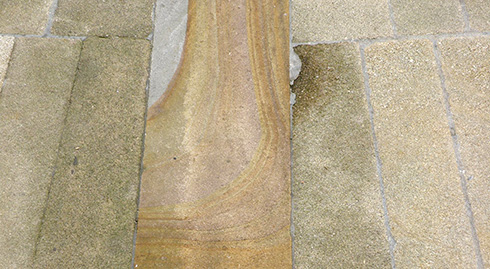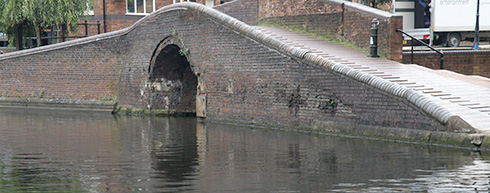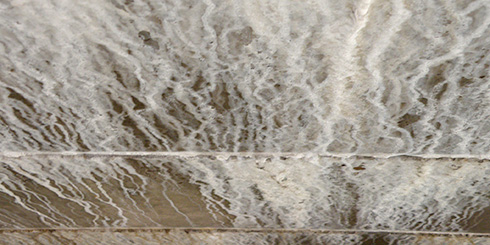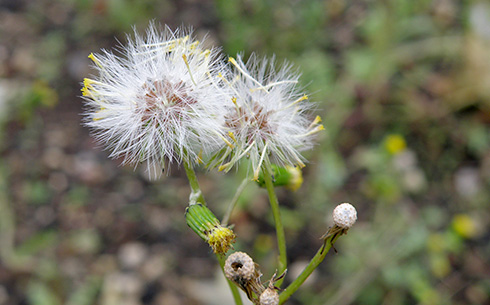Looking for Life: An Autumn Nature-walk in the City
It's mid October and the sky is overcast, the temperature has dropped in the last few days and night-time storms have been beating the skylights in our loft bedroom. I've got a day to myself and feel the impulse to head for the city centre to experience Autumn in the 'urban jungle' that is now so many of our habitats.
My intention, as with other quiet days, is to practice deep listening and deep watching, opening myself to a greater sense of connection with the natural world, with the Divine and with humanity. I admit I find this a challenge in the city, which some have called a desert of human making. It’s an act of seeking: looking for life, looking for the wisdom inherent in the natural world, looking for Christ, who to Christians is holy Wisdom; looking for hope. There’s a quotation that I really love from the Gospel of Thomas, an ancient text which contains sayings attributed to Jesus, discovered along with other ancient writings, as recently as 1945 in a cave in the Bible lands:
Jesus said, “I am the light that is over all things. I am all: from me all came forth, and to me all attained. Split a piece of wood; I am there. Lift up the stone, and you will find me there.”
It describes my search. Splitting wood, lifting stones, I search for life, for that wonderful synthesis of creation and the Divine.
Waiting at the bus stop at the start of my journey, I look down at the herringbone pavement. Somebody laid this, brick by brick on a bed of pressed sand, down on hands and knees, not so long ago. Into the sand, ants have tunnelled out an underground system and emerge through an almost imperceptible hole, to scuttle down the valleys between the bricks, safe from human footfalls. Ant cities fascinate me in their complexity, and their vulnerability. It is possible to forget that our cities are vulnerable too. Although I have issues with the aridity of what we have built, I know I need to enter the city with compassion not judgementalism. As I set out, this is the first challenge.
I ride on the top deck of the bus and from here can see gardens behind the houses: there are more green patches than it seems from walking along the pavement. Over a building-site board I see red-sanded waste ground that has obviously been left a couple of years now, it is full of feral buddleia bushes, ragwort and the occasional birch sapling, always the pioneer.

I alight on Broad Street where most of the night clubs are to be found, and begin my walk, passing what used to be a bank, built of fine sandstone, the carved scroll-work around the door now eroding like any cliff-face. I pass pink granite pillars and slabs of slate set perpendicular to the path as a sculpture, then more sandstone under my feet. I pause for my first ‘moment’. These patterned paving slabs were once the sand laid down on an ancient ocean floor, pressed into rock by colossal forces. I imagine the ocean and the creatures of the sandy sea bed, fish and urchins, corals and crabs. Just round the corner from here is a large aquarium. The fish in it, I imagine, haven’t changed much since the time this pavement stone was under the sea itself. A sense of continuity with the past and awe at such huge timescales catches me like a wave.

Reaching the canal, I stop again to lean over the bridge. Here, the heavy industry of times gone by has given way to eateries, hanging baskets and tour-barges, the becalmed water reflects the ‘going nowhereness’ of leisure-seekers: we are all entitled to rest, relaxation, moments of calm, food with friends: the seventh day sabbath rest is a Divine institution. But still, the canals were the channels by which the industrial revolution was birthed, gouged out by blood, sweat and toil, floating coal and iron to reshape the world – seducing us, enslaving us, yet, also shifting us towards ever higher standards of living.
I feel a pang of remorse for the power these fossil fuel technologies have unleashed and the part these canals played in the climate change we are struggling with now. This is my moment of sorrow for our sins – my own carbon footprint sins - the need for green grace and renewal. To me, the self-giving one, God, continuously allows us to break, exploit, even feast upon the sacred body, in a macrocosmic expression of Eucharist, and this same self-giving God continuously forgives our violence and the way we take so little heed of consequences to other living things, other people around the world, and generations to come. Yet living in grace is no excuse; ‘repentance’ calls for change of heart, and in this moment the very water in the canal itself seems to insist that it is time for change, time to extend our loving care to all life, to the planet itself.

I search the walls and pavements for signs of life. All I can find are patches of moss in damp corners, a single, tiny money spider on a single, tiny thread, and then on the last set of steps, a family of woodlice nestled in mortar cracks. ‘What have we done?’ I ask myself. But passing the underside of a concrete stairwell, I am attracted by flowing white formations like calcium deposits in a cave. Looking more closely, I see stalactites forming from the underside of the stairs; the water seeping through the building materials has begun to erode the structure and re-form its minerals in beautiful ways. It’s not life, but it’s certainly a natural process, a sign of change, of impermanence. To me, it is beautiful.

Heading towards the centre of town, the sense of human control intensifies. Rowan trees are marshalled in rows; nothing but a bonsai ragwort survives the brickwork regime, tight-structured as quartz crystal molecules… until I reach the new library. Many are taking photos, it’s big and impressive. In its forecourts a patch of soil has been sown with wildflowers: cornflower, poppies, groundsel, an array of seedheads and grasses. I squat down and photograph these instead, taking pleasure in the revelations of minute detail the zoom lens brings, committing myself to identifying the plants I am not so sure of, later. I want to connect with these plants, encourage them to grow, somehow communicate to them that I am so glad to find them here. My photography allows me the excuse to take my time and get down to their level, to peer closely, to stroke stems, singling out subjects for the lens. It enhances my love of them. They seem so delicate and I find myself reflecting on their transitoriness, but also the hope that their seeds will disperse and colonise the corners of carparks and the gutters of shops.
Rain begins to fall, softly penetrating the soil, caressing leaves. I imagine the soil and her little wildflowers sighing with delight and move on. Beyond the meadow bed the rain has nowhere to go and forms puddles on the pavement. Then, nearby, the sound of rushing water travels from a drain cover: there are channels of water right beneath our feet. I wonder where the pipe goes, and what else is under the pavement. Walking by the Town Hall, I notice the shape of a bivalve in the stone and pause to take a better look. The whole building seems to be built of a fossil bed, quarried from some rock face, dressed and re-ordered. There are many species here, from some primordial ocean floor. I place my hands on the stone, and rest into the sense of vastness. One of the images of God in scripture is of a rock (for example a feminine image in Deuteronomy 32:18). I find it a comforting image of stability, I think of caves and the refuge of safe darkness.
Moving on, I wonder how the row of plane trees ahead of me get enough to drink, with their collars of tarmac and bricks. I look down to the roots of one, noticing how it is causing an undulation in the bricks around it. I pause again and lean my back against the tree. To me, this is a way of making real contact, a moment of intimacy with another living being in a busy street. I imagine the tree’s roots splayed out deep into the soil, searching for moisture. Cells work at a microscopic level to draw water up and up, the pillar of the trunk a living conduit to the leaves, which send moisture back out into the atmosphere. Amazingly, it’s the transpiration from the leaves, the ‘breathing’, that helps to pull water upwards from the roots.
Still resting against the tree, I close my eyes as a samba band approaches and parades past, bold drums pounding a rhythm that stirs me viscerally. Roused from meditation, I feel a desire to follow the drums down the street; so alive, so wildly joyful, proclaiming a message of freedom. The samba band stops quite near my bus stop so I decide to head back.
From the top deck of my bus, the river Rea is visible for a few moments on the other side of a brick wall that is too high to see over from pavement level. It trickles along from a westerly direction, squeezed between derelict warehouses and factories. Its source is not all that far away, I mean to make a pilgrimage to it one day. The river here is narrow and straight, constrained in a channel of concrete as though it were nothing more than a drain.
Some of the earliest human settlements in the area were on the banks of the Rea, thousands of years ago. In times past, a river was considered sacred, a place people came to commune with the Divine. The way the Rea is hidden as it passes through the city, straight-jacketed, built over, stripped of natural habitat, simply not valued, is very sad. Most people don’t even know it’s there, whereas the canals, human-made means-to-an-end of our former industry, have become a ‘feature’.
By the time I walk home from the bus stop, my shoes have leaked and my feet are wet, my hair is wet too, rain chilling my scalp, energising me. I have travelled a circle, sought out contact with the natural world, had moments of awe, of love, of regret, intensity and reflection. I feel enriched.
Suggested Response
In the great wheel of the seasons, elements and directions, beloved of many walking an earth-spirituality path, it is common to connect the season of Autumn with the element of Water, and the direction of West.
- As a suggestion for engaging with the natural world in an urban environment this Autumn you might like to take time to notice how water is present, and what it might be saying to you in its many permutations, in the weather, in water features, in plant life …
- For reflection or research, consider the sense of sacred associated with rivers around the world and in the past. How can that sense of sacredness shape our own spirituality?
- Read Deuteronomy 32:18, You were unmindful of the Rock that bore you; you forgot the God who gave you birth. (NSRV)
Notice that the rock image is a maternal one. How might this connect, for you, with the self-giving nature of God revealed in the natural world and for Christians, in Jesus?
Please bookmark this post at Facebook or Twitter:


Your comments:

Pleasley Forest Church
Encountering the Eternal One within the ancient boundaries of Sherwood Forest More ...

Essex Forest Church
We seek to find the presence of God in the open air and in nature, and to connect with the Divine Being who is present in creation. We seek to foster a love of creation, a love which will lead us to care for it. We look for reconciliation between nature and human beings, and within human relationships. More ...
oxforddiocese:
Great to see how @RiponCuddesdon are engaging with @ARochaUK Eco Church scheme - love the Forest Church area made b… twitter.com/i/web/status/1…
18 Aug 22
YBS_Church:
Our Forest Church takes place on Sunday, 28th August, at 4.30pm in the Gifford Community Woodland (Fawn Wood), for… twitter.com/i/web/status/1…
19 Aug 22
rebeccaBug:
Tremeirchion have their first Forest Church service tomorrow so the boys thought they had better check out that the… twitter.com/i/web/status/1…
20 Aug 22
